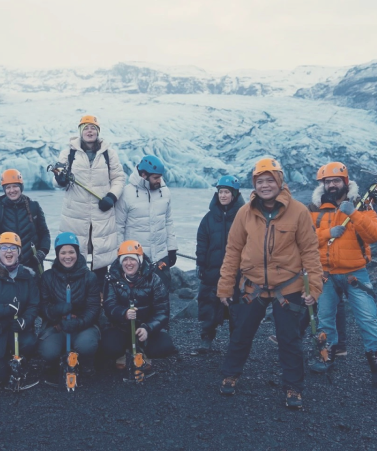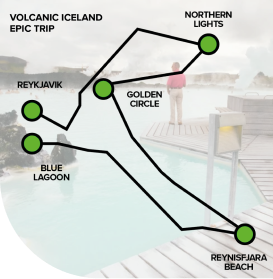Parisian Parks Are a Pleasure Ground of Evolving Ideas About Human Nature

From rigid geometry through Romantic idealism to guerrilla gardening and rooftop farming, the design of Paris’s green spaces over the centuries tells the story of a city – and a society – getting to grips with humanity’s place in the natural world.

Without parks, cities would be a monotony of brick and mortar. Not only do green spaces provide an aesthetic respite for residents, they function as the city’s lungs, purifying polluted air. In Paris, parks are also central to the city’s way of life; however, they haven’t always been open to the public, nor as lush as modern environmentalists would prefer. Indeed, the evolution of garden design in the capital reflects shifting ideas about the relationship between humans and the natural world.

Destinations Unlocked:
Let our travel expert Stefano help you find your perfect Culture trip
CentralAmerica
1. Guatemala
An express adventure for those with limited time off. Prepare yourself incredible experiences. You will hike a volcano, visit mayan temples and witness a ceremony and take in beautiful colonial Antigua.
CentralAmerica
2. Belize
A quick trip not too far away for those seeking a relaxing mini break. You will have plenty of free time to relax but also some awesome activities to experience the rainforest and the caribbean sea.
CentralAmerica
3. Mexico
An exciting mini trip exploring the lesser known colonial towns of central Mexico. This is hte perfect trip for someone with limited time off and still wants to turn on explorer mode and do something different.
SouthAmerica
1. Ecuador
A remarkable 8 days adventure through the Andes and the Amazon rainforest. The best choice for adventure seekers wishing to visit the 2 most iconic areas of South America, in only 1 week and no flights.
SouthAmerica
2. Peru
An alternative itinerary to classic Peru, from Cusco to Arequipa. This itinerary is great combination of highlights Cusco and Machu Picchu with the lesser known Arequipa and Colca Canyon.
Europe
1. Italy
The ultimate Italian experience from the vibrant streets of Naples to the breathtaking sceneries of the Amalfi Coast followed by Matera and down to Puglia with its golden beaches, intense flavours and fascinating destinations.
Europe
2. Scotland
Embark on this great adventure starting from London all the way to Scotland with a true Scottish experience made of breathtaking sceneries, whisky tasting and ..lots of fun! Ideal for train lovers and explorers.
Europe
3. Portugal
A wonderful train journey around Portugal, from the romantic city of Porto to the Douro Valley, to the beautiful Aveiro all the way to Lisbon and Sintra. The perfect trip to train, culinary and culture lovers.
Asia
1. South Korea
Discover incredible temples, mountains and modern cities on this 10 day adventure. This trip is perfect for those seeking immersion in the cuisine, culture and natural wonders of South Korea.
Asia
2. Thailand
From Bankgok to Angkor Wat to Ho Chi Minh City and everything in between - adventure through the heart of South-East Asia. Taste the delights, see history brought to life and unwind on a Mekong River cruise.
Asia
3. Sri Lanka
A fantastic adventure that showcases Sri Lanka's fantastic landscapes, wildlife and flavours. With 3 epic rail journeys, 3 UNESCO heritage sites and time to relax, this trip has loads to offer at a great price
Africa
1. Morocco
An epic journey across Morocco: from Casablanca to Marrakech, through the blue city of Chefchaouen to the wonders of the desert and deep to the High Atlas Mountains - this trip has it all! Ideal for true explorers!
Africa
2. Egypt
From Cairo to Aswan, this trip brings the land of the pharaohs to life. You'll visit the Pyramids, Valley of the Kings and Luxor Temple and cruise down the Nile in style. This is the perfect way to explore Egypt.In the 16th century, the study of mathematics and science led to increased interest in the rational order of the world. European thinkers such as Francis Bacon began to posit that a civilisation’s complexity could be measured by how effectively it could manipulate nature for human needs.

The French formal garden, the jardin à la française, is the embodiment of this philosophy. Landscape architects manipulate each plant to create clean lines and mathematical designs, conveying rational order in the ornamentation. Aligned along a central walkway, each section of the garden functions as a room, thus civilising the exterior space, transforming it into a venue for socialising.
For King Louis XIV, the style was a way for him to demonstrate how France was poised to dominate the modern world. As part of his grand plans for the further expansion of the Château de Versailles from a hunting lodge to a palace, which began in 1661 and continued until his death in 1715, he commissioned André le Nôtre to design a fittingly elaborate jardin à la française – it remains one of the best examples of the style. Others in Paris include the Jardin des Tuileries, in the grounds of the Louvre, and the Jardin du Luxembourg, both of which were also designed to reflect their adjoining royal palaces.

Unsurprisingly, the cost of maintaining square trees, intricately coiled flower beds and topiaries was extortionate. When revolutionaries overthrew the monarchy in 1789, royal spending habits were a major point of contention. Despite its inherent expense, the garden at Versailles was saved thanks to its relationship to the scientific revolution; the technology used in its irrigation systems impressed the revolutionary government so much that the site was preserved for educational purposes.
Growing criticism of royal spending certainly contributed to the jardin à la française falling out of fashion, but attitudes toward human nature and the natural world had already begun to shift, leading it to seem increasingly gauche.
One of the style’s most vocal critics was 18th-century philosopher Jean-Jacques Rousseau, who despaired at its formulaic construction and disunity with nature. Instead, he advocated the landscape garden, a style that originated in England and fit with his notion that the ideal world for humans was one without the corruption of society. These gardens were an idealised representation of nature – a meditation on a lost Eden, on human nature’s lost innocence, more often inspired by Romantic landscape paintings than actual landscapes – the purpose of which was to spiritually enrich visitors.
Parc Monceau is an early example of this style. There are no clean perpendicular lines or geometrically trimmed hedges here; in there place, curved pathways meander through the park, opening at each turn onto a picturesque vision of abundant natural growth. Follies, such as miniature windmills and Roman ruins, contribute to the atmosphere and designer Louis Carrogis Carmontelle’s mission to “unite in one garden all places and all times”. Still, these transformative spaces, like the formal gardens that preceded them, were for the most part only available to the moneyed classes.

It wasn’t until Napoleon III commissioned Georges-Eugène Haussmann to renovate Paris that parks became a central feature of city life. Aside from demolishing medieval districts and replacing them with broad, modern avenues flanked by imposing apartment buildings, the most zealous urban planner in the capital’s history oversaw the creation of 27 public squares and the development of the Bois de Boulogne and Bois de Vincennes, woodlands to the west and east of the city where Parisians could escape to.
This marked a major shift in the way green space functioned in everyday life. While the formal gardens of Louis XIV were an extension of palatial state rooms frequented only by the elite, during the Second Empire access to green space became the right of all French citizens.

Parks remain central to Paris’s culture: at lunchtime and weekends in fair weather, lawns fill with people seeking respite from the stresses of city life. But greenery offers more than just rejuvenation for 21st-century Parisians: it offers an opportunity to limit their collective carbon footprint.
Far from being an exercise in control over nature, parks now provide a way for people to embrace their symbiotic relationship with it. In 2014, the mayor of Paris, Anne Hidalgo, took this to heart when she announced her mission to ‘green’ Paris by 2020. In the years since, her ambitious programme has involved, among other things, creating more green spaces along the banks of the Seine.

However, Parisians have long been reinterpreting the ways in which green spaces should be conceived and implemented. Unofficial projects such as guerrilla gardens pepper the streets; herbs and vegetables are planted in hastily constructed containers, which passers-by are trusted to harvest for free. While similar gardens might be swiftly removed in other cities, Paris’s municipal workers respect their quaint “ce jardin est pour tous” (this garden is for everyone) signage, leaving them to flourish.

The city’s changing relationship with green space can also be seen in other officially sanctioned projects such as the proliferation of living walls, including that of the Musée du quai Branly. Likewise, rooftop gardens, apiaries and even urban farms demonstrate an ongoing transformation of the urban space with nature in mind. From homegrown strawberries at department store Galeries Lafayette to honey at the Musée d’Orsay, people, plants and animals are coexisting in new and mutually profitable ways. Indeed, as well as being visually striking and innovative uses of outside space, green walls and rooftop gardens have the added benefit of regulating building temperatures, alleviating the need for climate control.


Unlike in the heyday of the jardin à la française, the natural world is no longer seen as being at odds with human advancement. Sustainability has become the civilising feature of modern architecture thanks to centuries of musings on the relationship between people and their environment. Whereas thinkers of the 16th century saw green space as something to control and those of the 19th century saw it as a source of aesthetic and spiritual enrichment, 21st-century philosophy on nature is focussed on seeing it rejuvenated, even in the most urban of spaces.

To coincide with Earth Day, 22 April, Culture Trip examines sustainable cities through the lens of architecture, food, waste and green spaces.
Volcanic Iceland Epic Trip
meet our Local Insider
Hanna

HOW LONG HAVE YOU BEEN A GUIDE?
2 years.
WHAT DO YOU LOVE ABOUT YOUR JOB?
It's the personal contact, the personal experiences. I love meeting people from all over the world... I really like getting to know everyone and feeling like I'm traveling with a group of friends.
WHAT DESTINATION IS ON YOUR TRAVEL BUCKET-LIST?
I have so many places on my list, but I would really lobe to go to Africa. I consider myself an “adventure girl” and Africa feels like the ULTIMATE adventure!



Every CULTURE TRIP Small-group adventure is led by a Local Insider just like Hanna.


KEEN TO EXPLORE THE WORLD?
Connect with like-minded people on our premium trips curated by local insiders and with care for the world
Since you are here, we would like to share our vision for the future of travel - and the direction Culture Trip is moving in.
Culture Trip launched in 2011 with a simple yet passionate mission: to inspire people to go beyond their boundaries and experience what makes a place, its people and its culture special and meaningful — and this is still in our DNA today. We are proud that, for more than a decade, millions like you have trusted our award-winning recommendations by people who deeply understand what makes certain places and communities so special.
Increasingly we believe the world needs more meaningful, real-life connections between curious travellers keen to explore the world in a more responsible way. That is why we have intensively curated a collection of premium small-group trips as an invitation to meet and connect with new, like-minded people for once-in-a-lifetime experiences in three categories: Culture Trips, Rail Trips and Private Trips. Our Trips are suitable for both solo travelers, couples and friends who want to explore the world together.
Culture Trips are deeply immersive 5 to 16 days itineraries, that combine authentic local experiences, exciting activities and 4-5* accommodation to look forward to at the end of each day. Our Rail Trips are our most planet-friendly itineraries that invite you to take the scenic route, relax whilst getting under the skin of a destination. Our Private Trips are fully tailored itineraries, curated by our Travel Experts specifically for you, your friends or your family.
We know that many of you worry about the environmental impact of travel and are looking for ways of expanding horizons in ways that do minimal harm - and may even bring benefits. We are committed to go as far as possible in curating our trips with care for the planet. That is why all of our trips are flightless in destination, fully carbon offset - and we have ambitious plans to be net zero in the very near future.





























